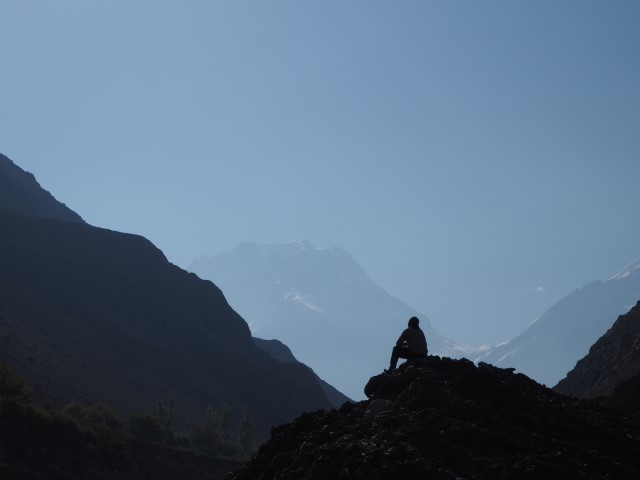Introduction
Have you ever wanted to experience the breathtaking beauty of the Himalayan mountains? Look no further than Nepal, a country that boasts some of the most magnificent trekking trails in the world. From lush green valleys and towering peaks to tranquil lakes and cascading waterfalls, there is something for everyone in this landlocked nation. Whether you’re an experienced hiker or a novice adventurer, Nepal offers an unforgettable journey through its stunning natural landscapes. Join us as we explore some of the best Trekking in Himalayas and discover why it truly is a paradise for outdoor enthusiasts.
The different regions of Nepal
Nepal is a country that boasts of diverse landscapes and regions. Each region has its own unique charm, culture, and attractions that make it worth exploring. From the lush green forests to the snow-capped mountains, Nepal’s different regions have something for everyone.
The eastern region of Nepal is known for its charming hill towns like Ilam and Dhankuta. This region is also home to Kanchenjunga, one of the world’s tallest peaks.
Central Nepal has Kathmandu Valley as its centerpiece which is surrounded by several UNESCO World Heritage sites including Pashupatinath Temple and Boudhanath Stupa. The Terai plains are located in southern Nepal with Chitwan National Park being one of its most popular destinations.
Western Nepal offers treks through some of the Himalayas’ most remote areas while Mid-Western & Far Western Regions offer scenic beauty with hidden treasures like Rara Lake or Khaptad National Park respectively.
Regardless of where you go in this fascinating country, there is always something new to explore.
The best time to go trekking in Nepal
Nepal has a diverse climate due to its varied topography, which means that the best time to go trekking depends on the region you plan to visit. The spring season (March-May) and autumn season (September-November) are generally considered as the best times for trekking in Nepal.
In spring, the weather is mild and dry with blooming rhododendrons along many of the trails. The skies are clear, making it an ideal time for panoramic views of the Himalayas. However, this is also a busy season with lots of trekkers on popular routes like Everest Base Camp or Annapurna Circuit.
Autumn offers similar conditions but with cooler temperatures and less chance of rain compared to summer months. This makes it perfect for high-altitude trekking where extreme cold can be expected at night. Additionally, this is when most Nepalese festivals fall which provides cultural insights during your journey.
Winter (December-February) brings snowfall above 3500 meters and lower temperatures but adds beauty to higher regions – perfect if you’re looking for fewer crowds while enjoying stunning scenery. Summer offers lush greenery thanks to monsoon rains from June-August but comes with muddy trails and poor visibility due to heavy cloud cover.
Regardless of when you plan your trip; make sure that your itinerary aligns well with weather forecasts before booking flights or accommodations since fluctuations in precipitation have been known throughout history!
What to expect when trekking in Nepal
When it comes to trekking in Nepal, you can expect an experience like no other. The rugged and majestic Himalayan mountains provide a stunning backdrop to your journey, while the rich culture and friendly locals add depth to your adventure. But what else should you expect when embarking on a trekking trip in Nepal?
Be prepared for some challenging terrain. While there are trails suitable for all levels of fitness and experience, many routes involve steep inclines and rocky paths. However, these challenges are more than worth it when rewarded with breathtaking views.
You can also expect a range of accommodation options along the way, from basic teahouses to luxury lodges. Many treks involve camping under the stars too – an unforgettable experience.
Another thing to keep in mind is that weather conditions can vary greatly depending on the time of year and altitude. Be sure to pack accordingly and heed advice from local guides.
Prepare yourself for an immersive cultural experience as you interact with Nepalese people living in remote mountain villages. You’ll learn about their customs and traditions while gaining insight into daily life at high altitudes.
Trekking in Nepal offers a unique combination of natural beauty and cultural immersion that’s hard to find elsewhere in the world!
Some of the best trekking trails in Nepal
Nepal is a trekkers paradise with breathtaking landscapes and diverse terrains. It offers endless trekking trails for all levels of enthusiasts, from beginners to experienced trekkers. Here are some of the best trekking trails in Nepal.
The Everest Base Camp Trek is an iconic trail that takes you through picturesque Sherpa villages, stunning glaciers, and majestic peaks. The Annapurna Circuit Trek offers amazing views of the Annapurna Range and takes you through lush rhododendron forests, traditional Gurung villages, and high mountain passes.
If you’re looking for a remote adventure then the Upper Mustang Trek is perfect for you. This hidden kingdom has preserved its unique culture and traditions which can be seen throughout your journey. Another off-the-beaten-path option is the Manaslu Circuit Trek that takes you around the world’s eighth-highest peak while offering beautiful scenery along the way.
For those short on time but still wanting to experience Nepal’s beauty, there’s always the Poon Hill Trek which can be accomplished in just five days. This trek will take you up to one of Nepal’s most famous viewpoints where you’ll witness unforgettable sunrise views over snow-capped mountains.
No matter what your preference or level of expertise may be, there’s no doubt that Nepal has something incredible to offer every traveler willing to lace up their hiking boots!
How to prepare for a trekking trip in Nepal
Preparing for a trekking trip in Nepal is crucial to ensure a safe and successful journey. The first thing you need to do is research the area where you plan to go trekking. Each region has its own unique landscape and weather conditions, so it’s important to know what kind of gear and clothing you’ll need.
Investing in quality hiking boots that are comfortable and durable will also be necessary as most trails can be rough and steep. You should also bring along warm layers, waterproof jackets, hats, gloves, sunglasses, sunscreen, insect repellent, medication if needed (altitude sickness tablets), water filters or purification tablets if planning on drinking from streams.
Physical fitness is another key factor when preparing for your trek. It’s recommended that you begin a training regimen at least 2-3 months before your planned departure date. Start with short hikes around your area then gradually increase the distance over time.
It’s also essential to have travel insurance that covers emergency medical evacuation in case of any accidents or unforeseen circumstances during the trip.
Lastly but not less important: always respect local customs by dressing modestly especially when visiting places of worship such as monasteries along some treks!
Conclusion
Trekking through Nepal is a once-in-a-lifetime experience that should not be missed. From the magnificent mountain ranges to the diverse flora and fauna, Nepal has something for every nature lover out there. Whether you are an experienced trekker or a beginner, there are trails suited to all levels of expertise.
However, it’s essential to note that trekking in Nepal requires proper planning and preparation. With some research and guidance from experienced trekkers or travel agencies, anyone can have a safe and enjoyable journey.
So pack your bags, put on those sturdy boots, grab your camera and get ready to embark on an adventure of a lifetime!



